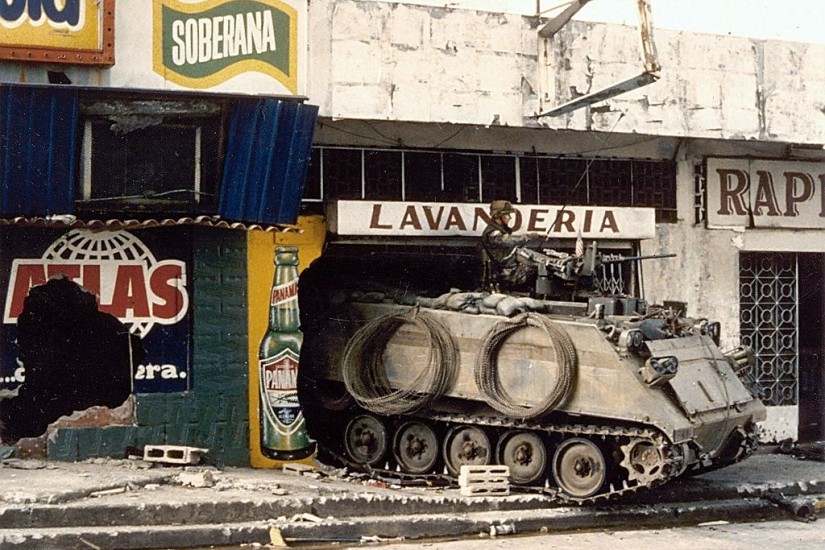As we end another year of endless war in Washington, it might be the perfect time to reflect on the War That Started All Wars -- or at least the war that started all of Washington’s post-Cold War wars: the invasion of Panama.
Twenty-five years ago this month, early on the morning of December 20, 1989, President George H.W. Bush launched Operation Just Cause, sending tens of thousands of troops and hundreds of aircraft into Panama to execute a warrant of arrest against its leader, Manuel Noriega, on charges of drug trafficking. Those troops quickly secured all important strategic installations, including the main airport in Panama City, various military bases, and ports. Noriega went into hiding before surrendering on January 3rd and was then officially extradited to the United States to stand trial. Soon after, most of the U.S. invaders withdrew from the country.
In and out. Fast and simple. An entrance plan and an exit strategy all wrapped in one. And it worked, making Operation Just Cause one of the most successful military actions in U.S. history. At least in tactical terms.
There were casualties. More than 20 U.S. soldiers were killed and 300-500 Panamanian combatants died as well. Disagreement exists over how many civilians perished. Washington claimed that few died. In the “low hundreds,” the Pentagon’s Southern Command said. But others charged that U.S. officials didn’t bother to count the dead in El Chorrillo, a poor Panama City barrio that U.S. planes indiscriminately bombed because it was thought to be a bastion of support for Noriega. Grassroots human-rights organizations claimed thousands of civilians were killed and tens of thousands displaced.
As Human Rights Watch wrote, even conservative estimates of civilian fatalities suggested “that the rule of proportionality and the duty to minimize harm to civilians… were not faithfully observed by the invading U.S. forces.” That may have been putting it mildly when it came to the indiscriminant bombing of a civilian population, but the point at least was made. Civilians were given no notice. The Cobra and Apache helicopters that came over the ridge didn’t bother to announce their pending arrival by blasting Wagner’s "Ride of the Valkyries" (as in Apocalypse Now). The University of Panama’s seismograph marked 442 major explosions in the first 12 hours of the invasion, about one major bomb blast every two minutes. Fires engulfed the mostly wooden homes, destroying about 4,000 residences. Some residents began to call El Chorrillo “Guernica” or “little Hiroshima.” Shortly after hostilities ended, bulldozers excavated mass graves and shoveled in the bodies. “Buried like dogs,” said the mother of one of the civilian dead.
Sandwiched between the fall of the Berlin Wall on November 9, 1989, and the commencement of the first Gulf War on January 17, 1991, Operation Just Cause might seem a curio from a nearly forgotten era, its anniversary hardly worth a mention. So many earth-shattering events have happened since. But the invasion of Panama should be remembered in a big way. After all, it helps explain many of those events. In fact, you can’t begin to fully grasp the slippery slope of American militarism in the post-9/11 era -- how unilateral, preemptory “regime change” became an acceptable foreign policy option, how “democracy promotion” became a staple of defense strategy, and how war became a branded public spectacle -- without understanding Panama.
